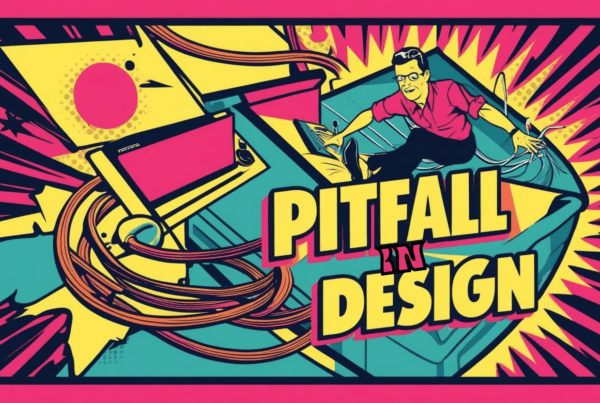One of the easiest ways of developing an intranet improvement strategy is to follow current trends. What can be better than listening to gurus and visionaries of digital transformation, digital employee experience and future of work? Indeed, this is a very reasonable, yet, very ambiguous decision. There is a risk you will end up having functionality just to have this functionality. Users may hate even the most leading-edge features you introduce. Sometimes you just need to do what you feel would be the best. Eventually, why not? Let us tell you some pretty unusual examples of how artists became legendary by doing unpopular or bizarre things. These examples may inspire you to trust your gut.
Banksy

Banksy is known for his incognito status and very active social position. His art is an irony over society. One of the most recent examples is when Banksy shredded his artwork right after it was sold at the auction. Of course, it became even more popular and expensive. We are not sure if this act has a major social impact as the author intended but was a financial success for the painting. So you can think of creating such “elusive” intranet campaigns. Launch a temporary gamification project. One of the tasks of this project may be to search for specific content in the online community. The tricky part will be that the content will be destroyed after a certain moment, so participants will only have a limited time to find these items. The content pieces themselves may contain hints or guesses about the following tasks. So users will try to bookmark this content so that they can return to it and have all the tips with them. Weird, but definitely out of the ordinary 🙂
Salvador Dalí
This artist is one of the most extraordinary and sophisticated men in the modern history of arts. You may like or hate his style but you definitely know his works. For example, remember the ovocyped he introduced in Paris in 1959? Totally weird stuff but we know about this stuff 🙂 His oddity is probably as much popular as his genius. Many people find his works frightening but truly unique. So you still have a chance to go down in history, even if you do strange things. Think about your ideas for the intranet you thought were too much for the digital workplace. Maybe you wanted to organize regular quests with prizes in your community? Go on, try it. You may link the quests with the knowledge of intranet functionality or the history of your company. The community users might actually like it.

Leonardo da Vinci

He is a legend, one of the most innovative artists of all time. However, even he had problems with customers 🙂 There is a story of when we worked on the creation of the Last Supper fresco. He struggled in drawing the face of Judas. He spent days in places of concentration of dangerous and socially neglected people looking for the face that would work perfectly to be the face of Judas. Of course, the priest that worked in Santa Maria delle Grazie church was not happy with this behavior and told him to start working instead of spending time just walking around. Da Vinci suggested the priest be a model for the Judas in case he would not leave him alone. As a result, we now can be happy enough to see the Last supper fresco with all the apostles on it. Sometimes perfect things take time so if you truly believe in your project it might take time to make it perfect. Don’t be afraid to spend time looking for inspiration, it is a part of the project too, even if someone does not believe in it. If you are to launch a massive project with a lot of functionality, think of having a flexible deadline or having a phased launch. It will help you save your nervous system and prepare a thing of beauty.
Michelangelo Buonarroti
One more artist of the Great four artists of the Renaissance is Michelangelo Buonarroti. We can assume that he was very confident in his paintings, he truly believed in what he did. For example, there is one of the most famous stories about him, that is, the story about his argument with Biagio da Cesena, a master of ceremonies. According to the story, when Biagio da Cesena saw the Last Judgment he condemned and criticized for displaying too many nude bodies. Michelangelo responded by adding the portrait of the master of ceremonies to the Last Judgment with the donkey ears and a serpent that envelops his body and bites the crotch. There is more to this story but what is important for us is that this story became so famous that there are a lot of versions of this story that have appeared throughout the time. You can find more about this story in the article by Norman E. Land. Of course, Michelangelo’s fresco in the Sistine Chapel is a gorgeous work of art but this story made it even more popular and interesting for scholars around the world. So the moral here is that if you truly believe in your project you should go for it and be ready to respond to the critique. Be brave and creative, if you get some criticism and it is irrational, even personal, respond creatively. You can hide a nice innocent joke for the critics (just make sure it won’t offend anyone) inside your project. For example, if you launched a widget and got a comment that the design is too overloaded with functionality (we know, you wanted to make as many users happy as you can) you can add the option to display “a simplified view” of the widget. This view may contain a lot less functionality and most people will still use the original view but someone may appreciate the joke and get what they wanted 🙂 Your project may become even more popular with such a user-oriented approach, and you can even make a special short introduction for your joke in the release notes for the users to make it more interesting.

Hieronymus Bosch

Bosch is known to be one of the most mysterious artists in history. His paintings are still a huge source of artistic riddles and inspiration for many people around the world. Bosch’s symbolism is bizarre yet very attractive. The devil is indeed in the details. In details, he created masterpieces within masterpieces. For example, a melody that was painted on the buttocks of a sinner depicted in Bosch’s The Garden of Earthly Delights. According to the BBC site, one student decided to perform this melody and it appeared to be pretty good. Just to imagine, this is a very-very small detail of the painting, that does not even appear to be in the center of the scene. This is an example worth following. When you work with any major functionality release (especially an app, any gamification project, or a highly interactive widget) don’t forget to make some “easter eggs” for the users. They will be happy to find something unexpected and not obvious in new functionality. Taking into account today’s popularity of “easter eggs” in mass culture, this is highly recommended if you have some extra hours in your project, of course. Even a small dancing animal animation would be nice for some specific use cases. Reward your users for their advanced activity. Maybe you can hide a QR code with the link to some secret branded products sale for the users who perform a very rare use case or something that you want your users to do more often. (You can even give a hint that there is an “easter egg” somewhere in the functionality). With such small pieces of encouragement, you will make your users want to use the functionality, to get acquainted with it. Either way, you won’t spend too many resources on it.
Gustav Klimt
Gustav Klimt is a great and talented artist with a recognizable unique style. He used a lot of gold colors in his sensual paintings, which made his works so unusual for his contemporaries. He was an artist who was as sincere as possible in his paintings. We would say that he was a truly Freudian artist in the way that he spoke from his heart in every work, no matter what canons of the art society dictated. Some people said that his style is too much or not sophisticated enough but his paintings are still believed to be some of the most favorite and popular among the general public. His works are at the center of many art exhibitions throughout the world. In many ways, because of the simplicity (in the sense of perception) and brightness of his style. From the manager’s perspective, his style is very successful in the financial aspect. His paintings are probably on the list of the top 10 popular for merch production. You can see his works on the mugs, shoppers, clothes, stationery, etc. Sounds pretty successful for not-sophisticated-enough, huh? What can a community manager take from this success? Don’t be afraid to make something bright and unusual. If you are to launch a project, supplement it with massive and interactive advertising. Incorporate some interactive elements in the advertising campaign. Let people notice your upcoming project. Let them wait to see more of it. Of course, the advertising should be interesting and captivating, not annoying. But it is more about common sense, so you’ll handle it. All you need to do is to imagine your perfect project, and we can handle the rest for you. You just need to contact us in any way, that is comfortable for you 🙂

These are just a very small list of examples of how art can change history, human preferences, and beliefs about what is truly valuable. Art is a universe of the most expensive and underestimated things. At the same time, every successful artist is a manager in some way as they manage not only to sell their paintings but to sell their point of view of the world around us, no matter how bizarre it may appear for most of us.





